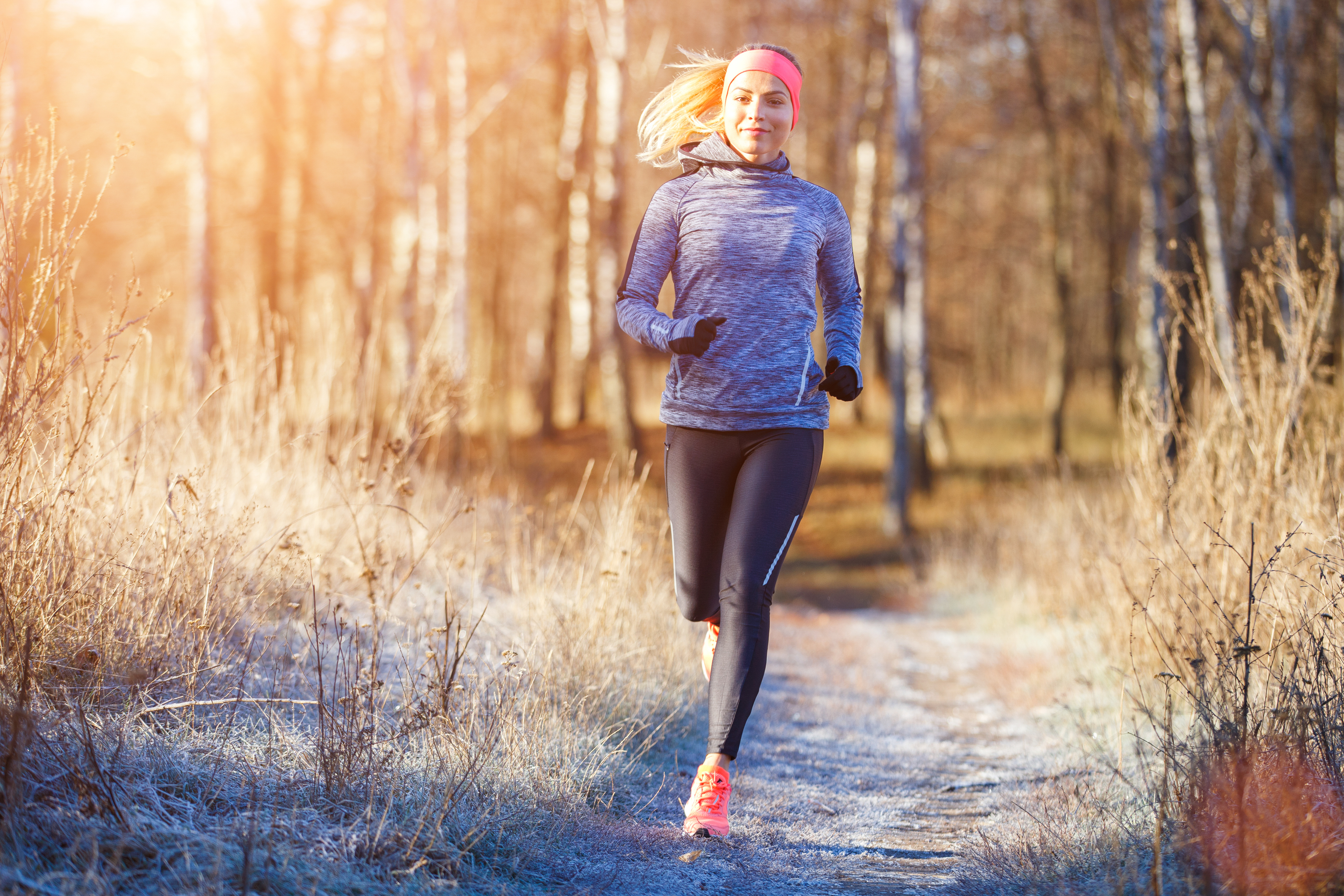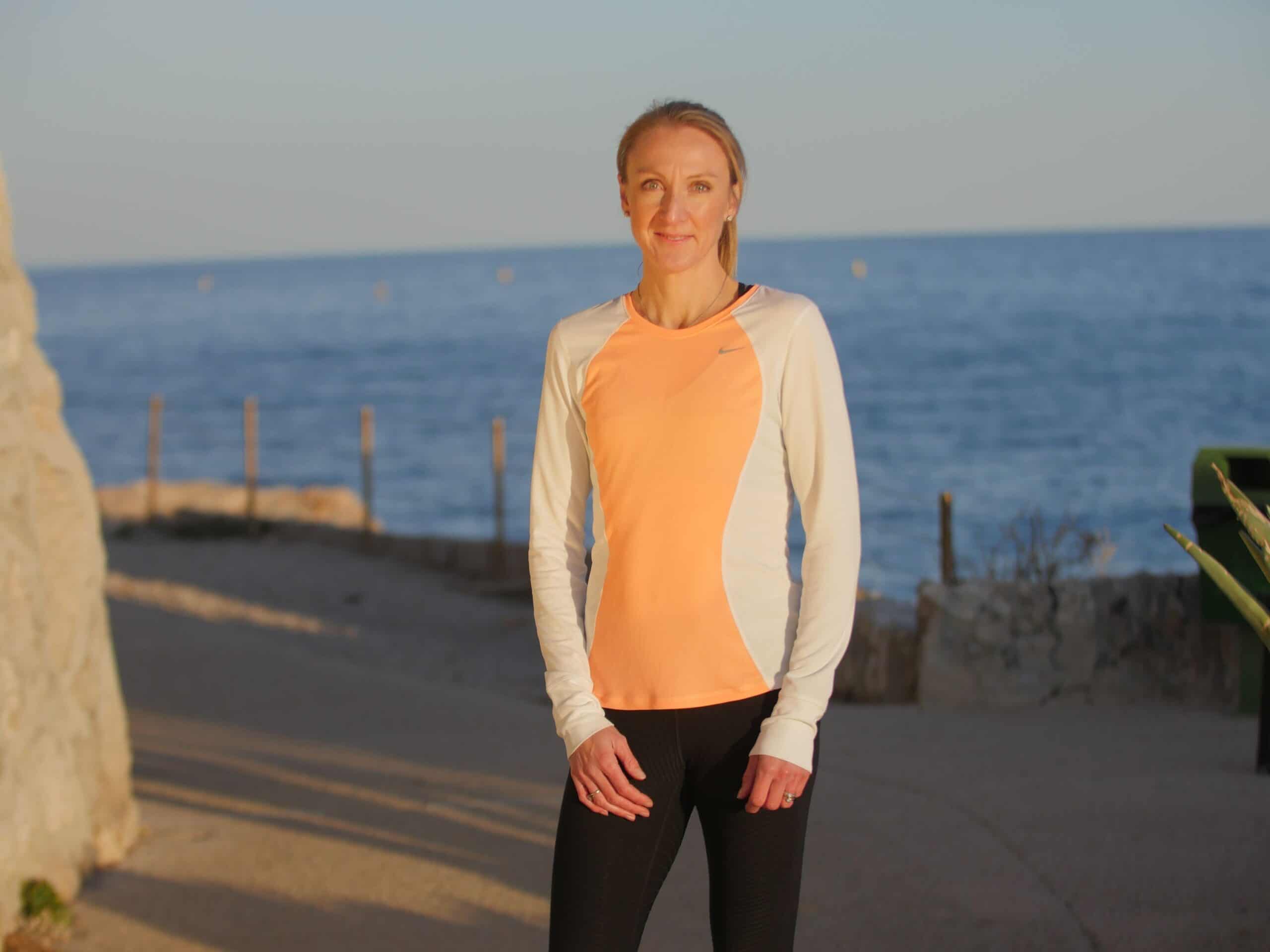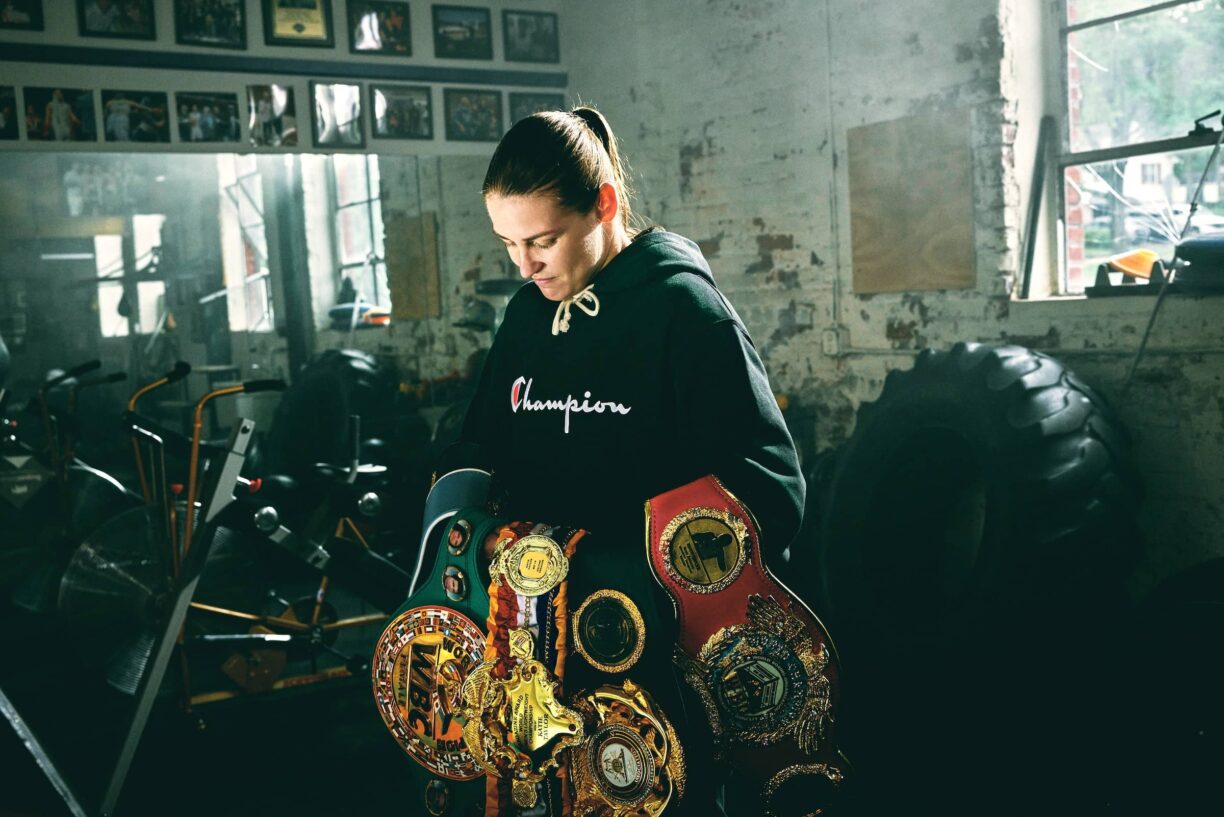“Being able to get out running really helps me handle whatever’s thrown at me, and just mentally put things in perspective and make decisions and think more clearly,” says Paula Radcliffe.
“There’s more oxygen going through you, and just getting outside and the endorphins as well, all really helps.”
She may be a former world champion and three-time London Marathon winner, but Radcliffe is firm in her message that “if you put one foot in front of the other and you run, you’re a runner” and thinks it’s brilliant so many people have discovered the benefits of running this year.
Want to keep up your running regime through winter? We asked Radcliffe for her top tips…
Be flexible when you need to
It’s normal to have ‘off’ weeks, when life gets in the way or you’re just not feeling it, but this doesn’t mean you have to abandon your efforts entirely. “It’s good to be flexible,” says Radcliffe.
“Use it to help you. One of the big things we saw in lockdown, and continue to see, is more people working from home and in a way that gives you a lot more flexibility.

“And it’s important not to build it up into another stress in your mind – ‘Oh, I’ve got to get up and do this’, or, ‘I’ve got to do 45 minutes’.
If you only go out for 10 minutes, that’s 10 minutes better than nothing. Or if you decide: ‘The weather’s horrendous today, I’m just going to exercise in the house instead’, that is still a workout. Be creative with it and use it as something you’re doing that’s good for you, not a chore you ‘have’ to do.”
Use goals and rewards
“Have a goal you’re working towards. It can be something like a virtual race, or, ‘I want to get to the point where I can run 5k in such and such a time, or run two miles without stopping’ – it doesn’t matter what it is, but having a goal keeps you connected to why you’re doing it, and build in rewards.
So as you tick off the goals or get closer to them, yes treat yourself to that big glass of wine or ice-cream, or that nice soak in the bath – just little things you enjoy so you can tick off the benefits.”
Add some cross-training
Cross-training helps avoid injuries and improve your form, and Radcliffe says winter is an ideal time to squeeze in some strength-building exercises at home.
“It’s important at all times to concentrate on a strong core and feet for runners, maybe even more so in winter, when you’ve got the risk of ice and the ground being more muddy and slippery, so your ankles need to be a bit stronger and more reactive,” she says.
Think about “really simple things, like planks, single leg planks, side planks. Maybe make it a little competition with the family,” Radcliffe suggests.
“The feet exercise can be as simple as standing on a folded towel on one leg while you brush your teeth, and then try closing your eyes to work on that proprioception [sense of body position] there.
“Or tie an elastic resistance band around a table leg and do some dorsiflexion exercise – pulling your toes back towards you to strengthen the muscles down the front of the shin, and then do side to side as well, that can really help with ankle strength.
“The balancing one you can do every day. The band one I’d say two or three times a week is probably enough, and the core stuff you could do every other day.”
Adapt your kit

If you’re going to be running in the dark, invest in a reflective jacket, and when it comes to keeping warm, Radcliffe says: “The biggest advice would be to layer up, because you will warm up once you’re moving.
Layer thin T-shirts, tops and a jacket, then you can take some off and tie them around your waist. Gloves are a big thing as well in winter, because if your hands are wet and cold, you’re going to be uncomfortable, so a good pair of lightweight gloves.
“The other thing is, because it gets muddy in winter, people may be more likely to run on the road. That slightly increases impact, so you want to look for a better cushioned pair of shoes if you’re running more on the roads.”
Don’t forget to hydrate and refuel
“Hydration’s really important. A lot of people don’t think about it in winter because they don’t think they’ll need as much, but you are going to be sweating,” says Radcliffe.
She suggests adding in “healthy fruits, like oranges and kiwis, as they will boost your vitamin C intake as well as your fluids.
Keep your immune system strong with healthy fats, as well as good proteins and carbohydrates, and have a nice snack to come in to when you’ve finished your run,” she adds.
“Trying to eat something within 20 minutes of finishing is great – that window is when the body is most open to restocking its fuel stores and that all helps with the recovery over the next 24 hours and with things like soreness.
“This is important all year round but might become a bit more obvious in winter, as you’re not only burning energy to run, you’re burning energy to keep warm too.
I make a load of healthy flapjacks with the kids, with oats, bananas, a bit of agave syrup and plant-based margarine, maybe some raisins and dried fruit.”
Don’t skip the warm-up
“You want to make sure your muscles warm up gently and gradually. So if you don’t do so normally, just walking or jogging slowly to begin with can help you warm up.
Sometimes in winter, I go out for a short jog with more layers on, then come back and maybe stretch a bit, ditch the top layer and then go out for my longer run.”





